The emission of electrons from a metal surface exposed to light radiation of appropriate wavelength is called photoelectric effect .The emitted electron are called photo-electron work function of threshold energy may be defined as the minimum amount of energy required to eject electrons from a metal surface .According to Einstein
Maximum kinetic energy of ejected electron = Absorbed energy - Work function
12mv2max=h(v)−h(v0)=hv[1λ−1λ0]
Where v0 and λ0 are threshold frequency and threshold wavelength respectively
Stopping potential : it is the minimum potential at which the photoelectric current becomes zero if V0 is the stopping potential eV0=h(v−v0).
The following figure indicates the energy levels of a certain atom .When the system moves from 2E level to E level a photon of wavelength λ is emitted .The wavelength of the photon produced during the transition from level 4E/3 to level E is
![The emission of electrons from a metal surface exposed to light radiation of appropriate wavelength is called photoelectric effect .The emitted electron are called photo-electron work function of threshold energy may be defined as the minimum amount of energy required to eject electrons from a metal surface .According to Einstein Maximum kinetic energy of ejected electron = Absorbed energy - Work function (1)/(2) mv(max)^(2) = h(v) - h(v(0)) = hv [(1)/(lambda) - (1)/(lambda(0))] Where v(0) and lambda(0) are threshold frequency and threshold wavelength respectively Stopping potential : it is the minimum potential at which the photoelectric current becomes zero if V(0) is the stopping potential eV(0) = h(v- v(0)). The following figure indicates the energy levels of a certain atom .When the system moves from 2E level to E level a photon of wavelength lambda is emitted .The wavelength of the photon produced during the transition from level 4E//3 to level E is](https://d10lpgp6xz60nq.cloudfront.net/physics_images/V_PHY_CHM_P1_C04_E01_097_Q01.png)
λ/3
4λ/3
3λ
3λ/4
The correct Answer is:C
λv=2E−E
hcλ=E∴λ=hcE
Also , hcλ1=4E3−E=E3
∴Λ1=hc×3E=3λ.
Topper's Solved these Questions
- BOOK - P BAHADURCHAPTER - ATOMIC STRUCTUREEXERCISE - Exercise 3B19videos
ATOMIC STRUCTURE
- BOOK - P BAHADURCHAPTER - ATOMIC STRUCTUREEXERCISE - Exercise 439videos
ATOMIC STRUCTURE
- BOOK - P BAHADURCHAPTER - ATOMIC STRUCTUREEXERCISE - Exercise19videos
ATOMIC STRUCTURE
- BOOK - P BAHADURCHAPTER - CHEMICAL BONDINGEXERCISE - Exercise 711videos
CHEMICAL BONDING
Similar Questions
Knowledge Check
- Question 1 - Select One
The emission of electrons from a metal surface exposed rto light radaition of appropriate wavelength is called photoelectroic effect .The emmited electron are called photo=-weklectron work function of threshold energy may be defined as the minimum amount of energy required to ejercted electron from a most surface .According to Einstein
Maximum kinetic energy of ejected electron = Aborbed energy - Work function
12mv2max=h(v)−h(vn)=hv[1λ−01λn]
Where vn and λ0 are thereshold frequency and threshold wavelength respectively
Sopping potential : it is the miximum potential at which the photoelectric current becomes zero if V0 is the stopping potential eV0=h(v−v0)
Which graph is correct ?A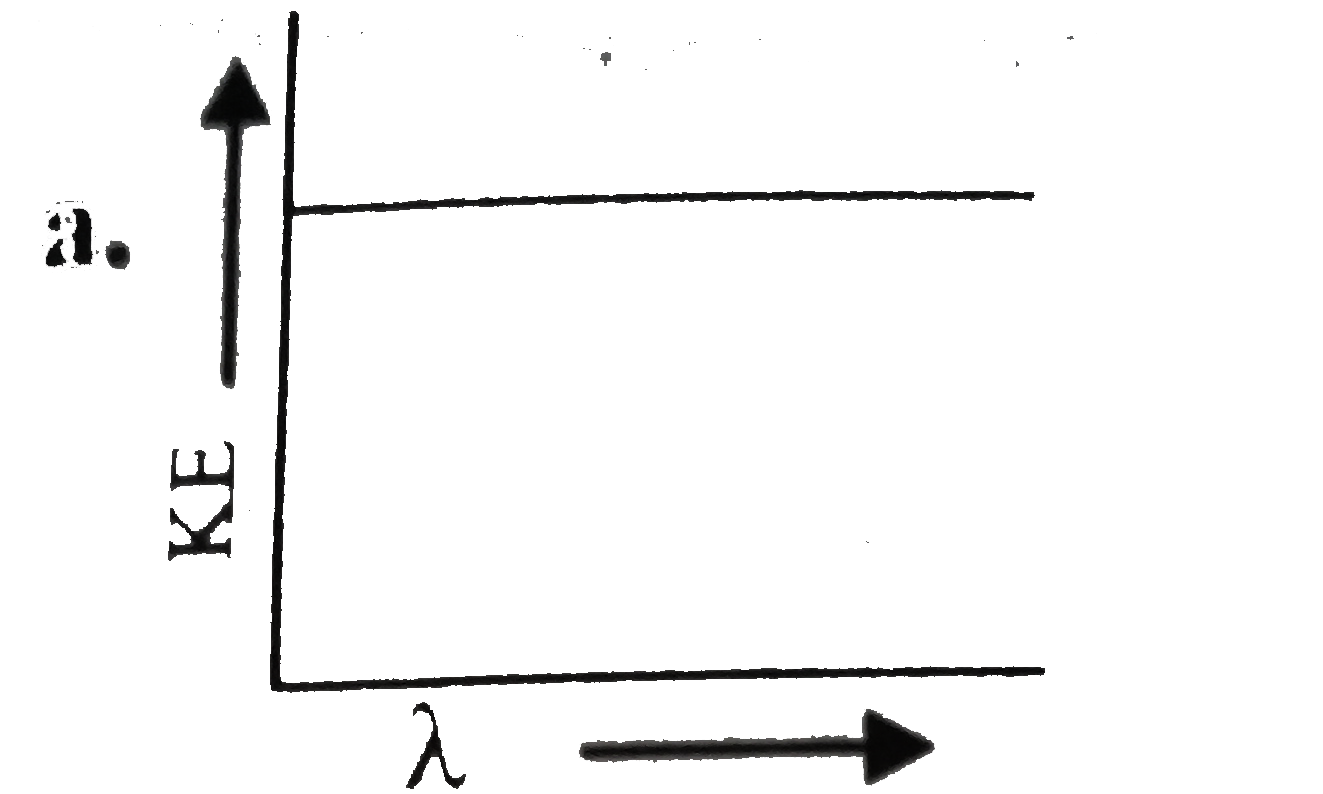 B
B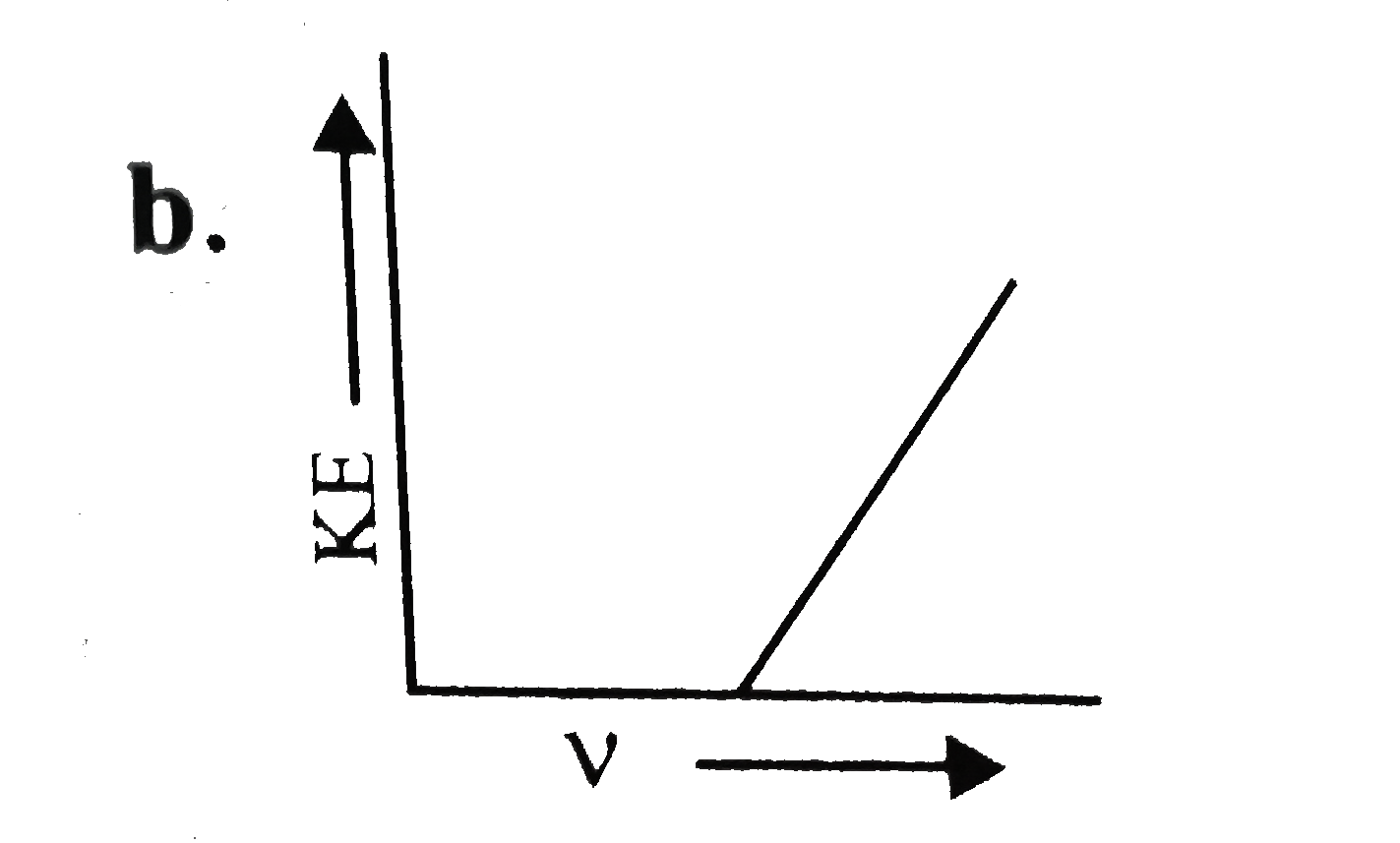 C
C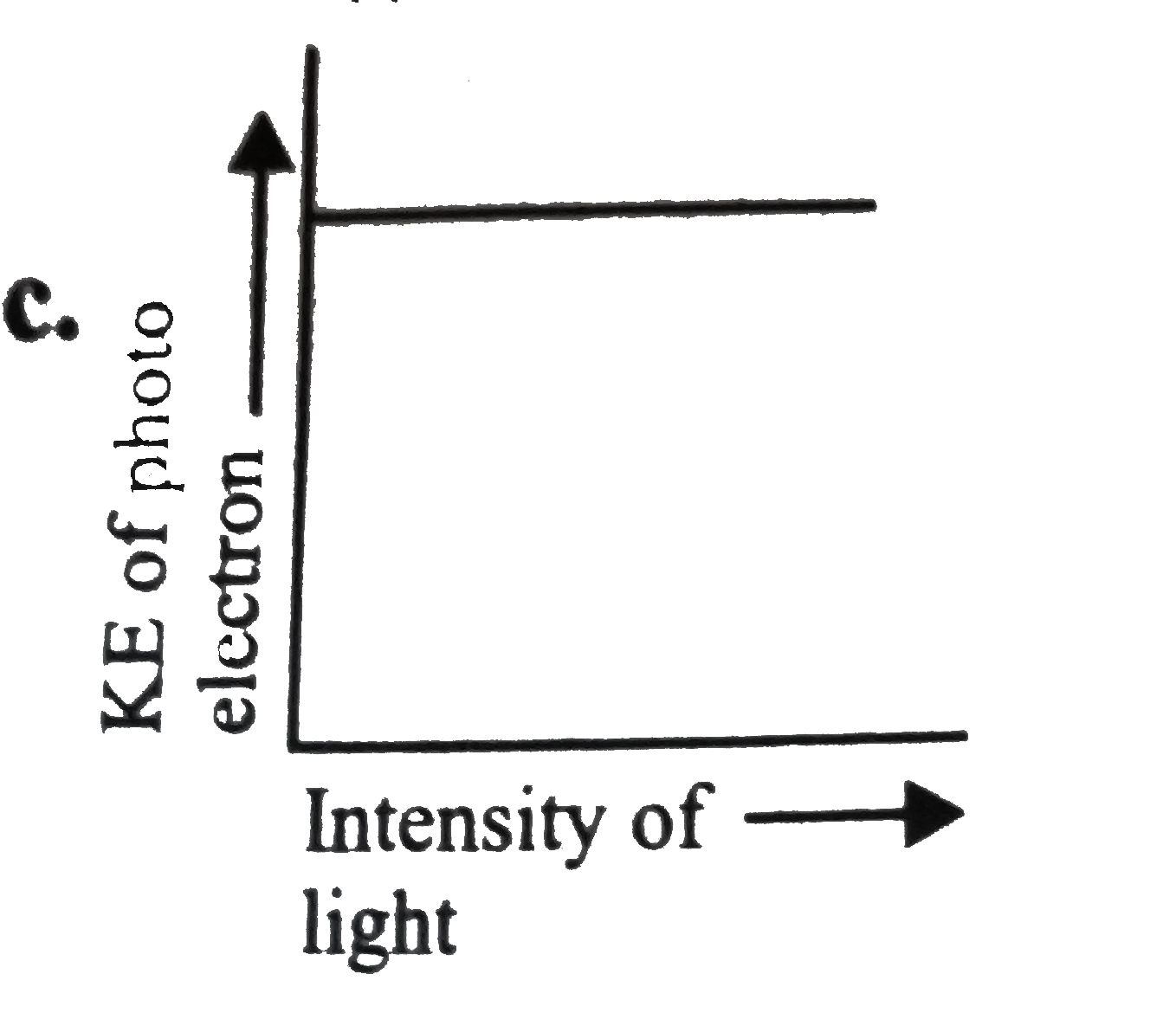 D
D
- Question 2 - Select One
The emission of electrons from a metal surface exposed rto light radaition of appropriate wavelength is called photoelectroic effect .The emmited electron are called photo=-weklectron work function of threshold energy may be defined as the minimum amount of energy required to ejercted electron from a most surface .According to Einstein
Maximum kinetic energy of ejected electron = Aborbed energy - Work function
12mv2max=h(v)−h(vn)=hv[1λ−01λn]
Where vn and λ0 are thereshold frequency and threshold wavelength respectively
Sopping potential : it is the miximum potential at which the photoelectric current becomes zero if V0 is the stopping potential eV0=h(v−v0)
The folloeing figure indicates the energy livels of a certain atom .When the system moves from 2E level to E lvel a photon of wavelength λ is emitted .The wavelength of the photon produced during the transition from level 4E/3 to level E is
 Aλ3B3λ4C4λ3D3λ
Aλ3B3λ4C4λ3D3λ - Question 3 - Select One
The emission of electrons from a metal surface exposed rto light radaition of appropriate wavelength is called photoelectroic effect .The emmited electron are called photo=-weklectron work function of threshold energy may be defined as the minimum amount of energy required to ejercted electron from a most surface .According to Einstein
Maximum kinetic energy of ejected electron = Aborbed energy - Work function
12mv2max=h(v)−h(vn)=hv[1λ−01λn]
Where vn and λ0 are thereshold frequency and threshold wavelength respectively
Sopping potential : it is the miximum potential at which the photoelectric current becomes zero if V0 is the stopping potential eV0=h(v−v0)
Whaich of the following is the graph between the frequency (V) of the incident radiation and the stopping potential (v) ?A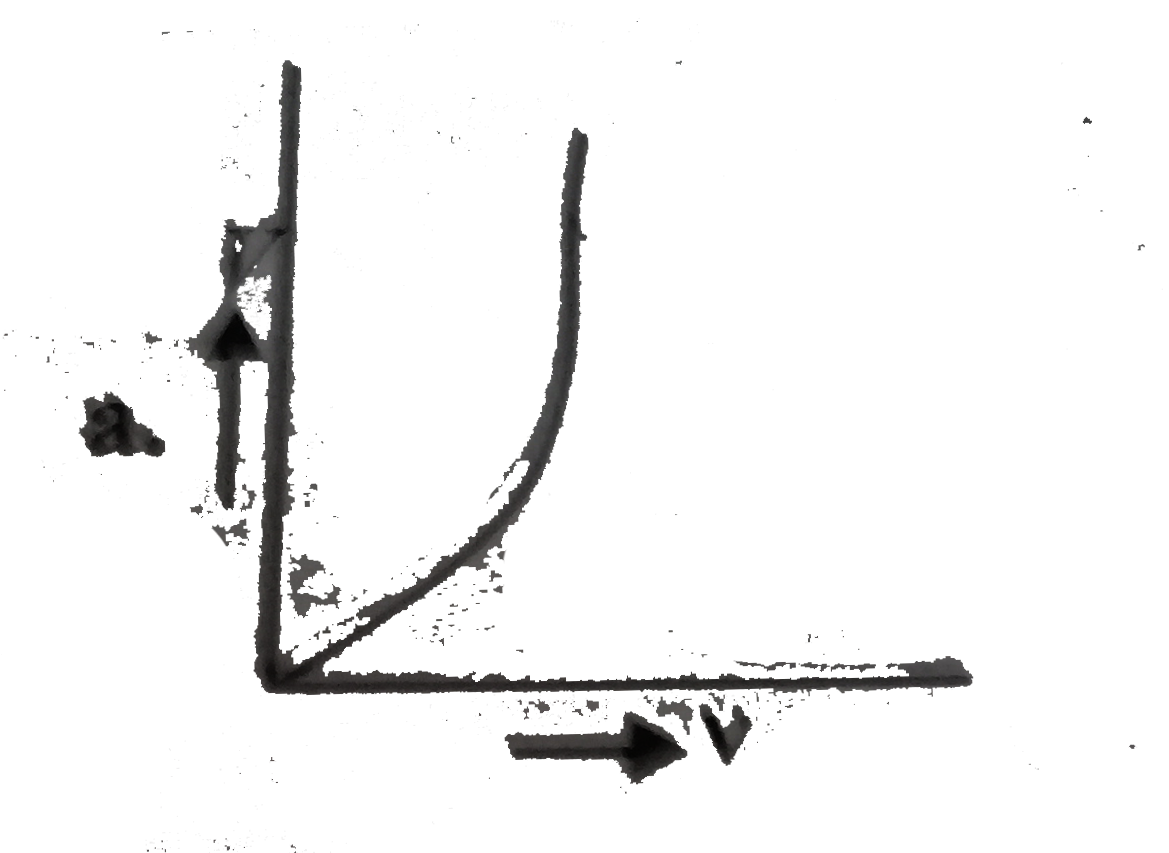 B
B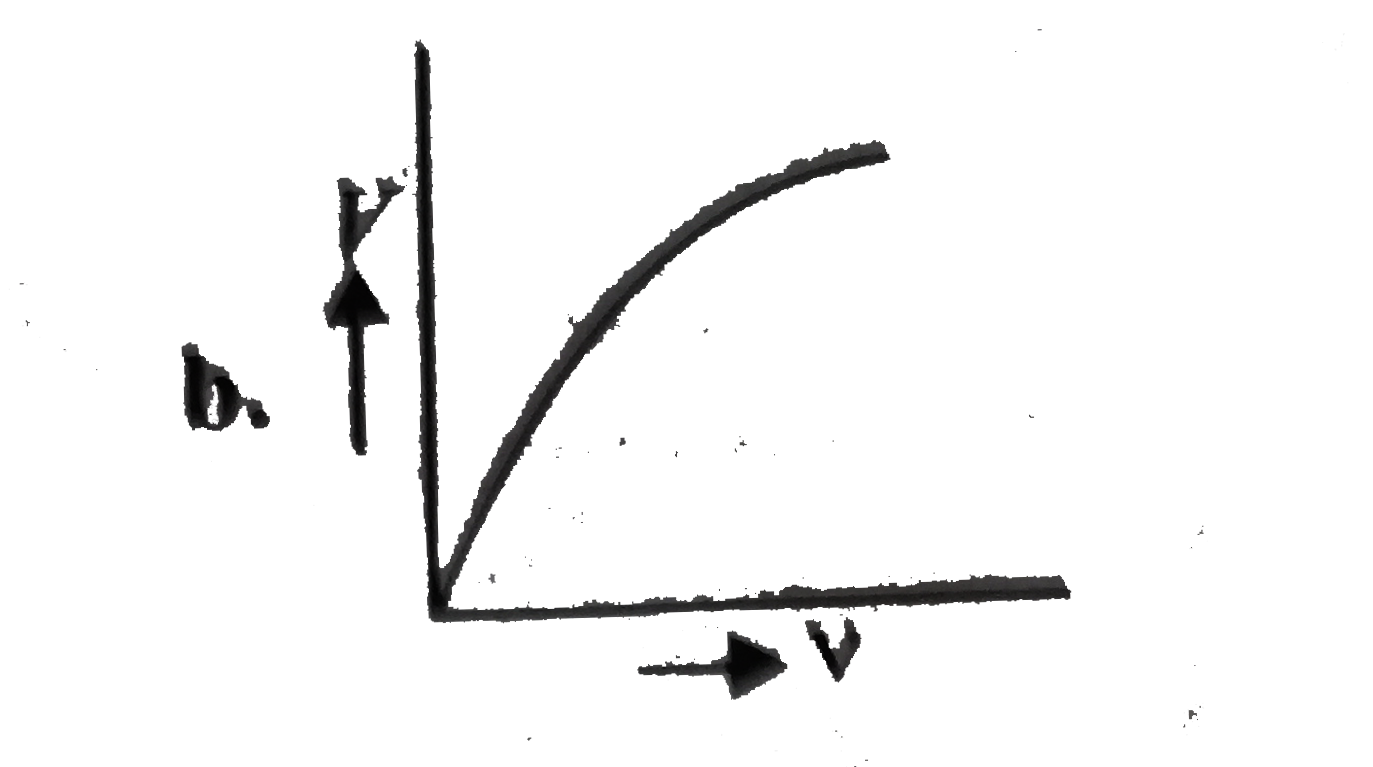 C
C D
D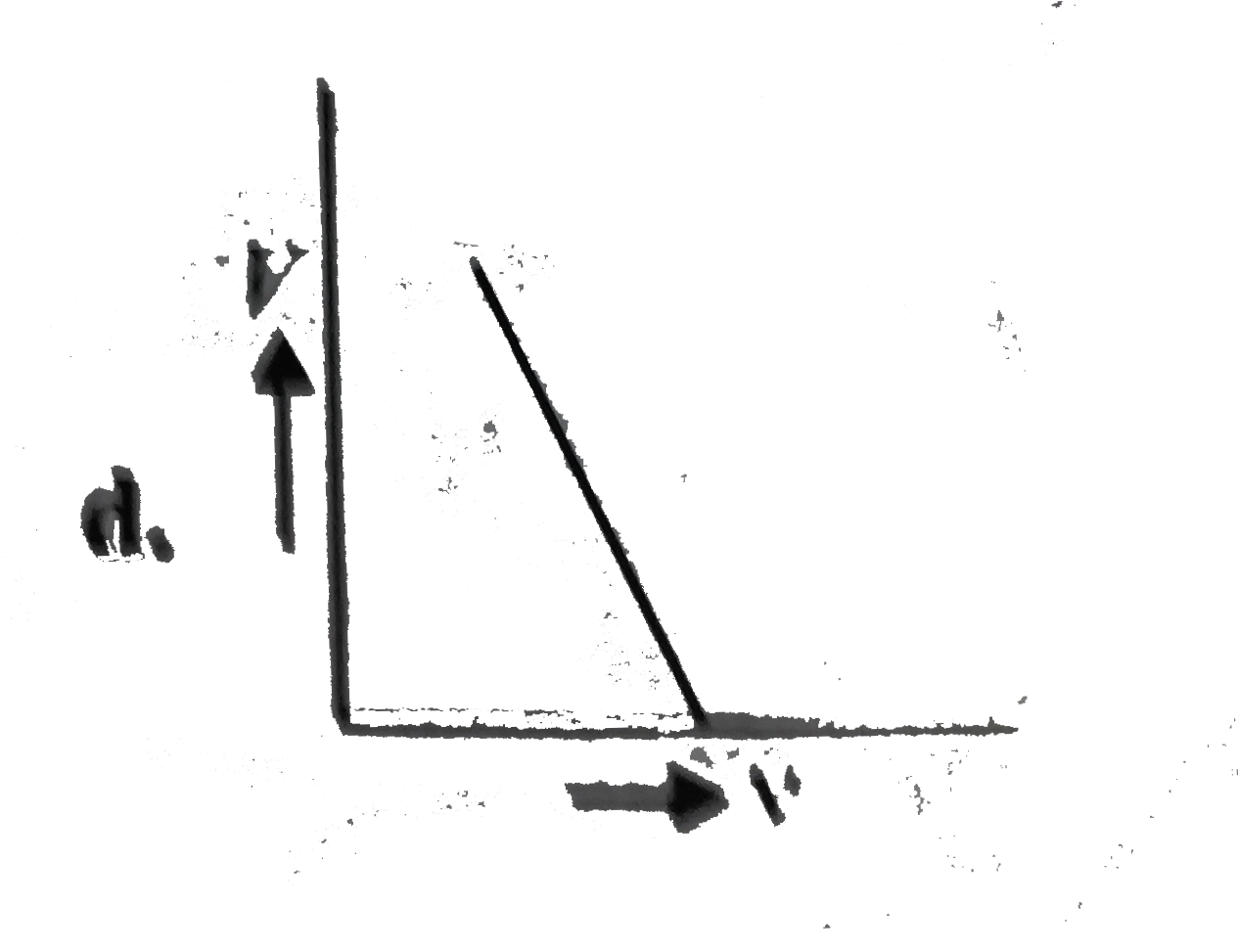
The emission of electrons from a metal surface exposed rto light radaition of appropriate wavelength is called photoelectroic effect .The emmited electron are called photo=-weklectron work function of threshold energy may be defined as the minimum amount of energy required to ejercted electron from a most surface .According to Einstein
Maximum kinetic energy of ejected electron = Aborbed energy - Work function
12mv2max=h(v)−h(vn)=hv[1λ−01λn]
Where vn and λ0 are thereshold frequency and threshold wavelength respectively
Sopping potential : it is the miximum potential at which the photoelectric current becomes zero if V0 is the stopping potential eV0=h(v−v0)
The stopping potential as a function on electron frtequency is plotted for two photoelectric surface A abd B The graph show that the work function of A is
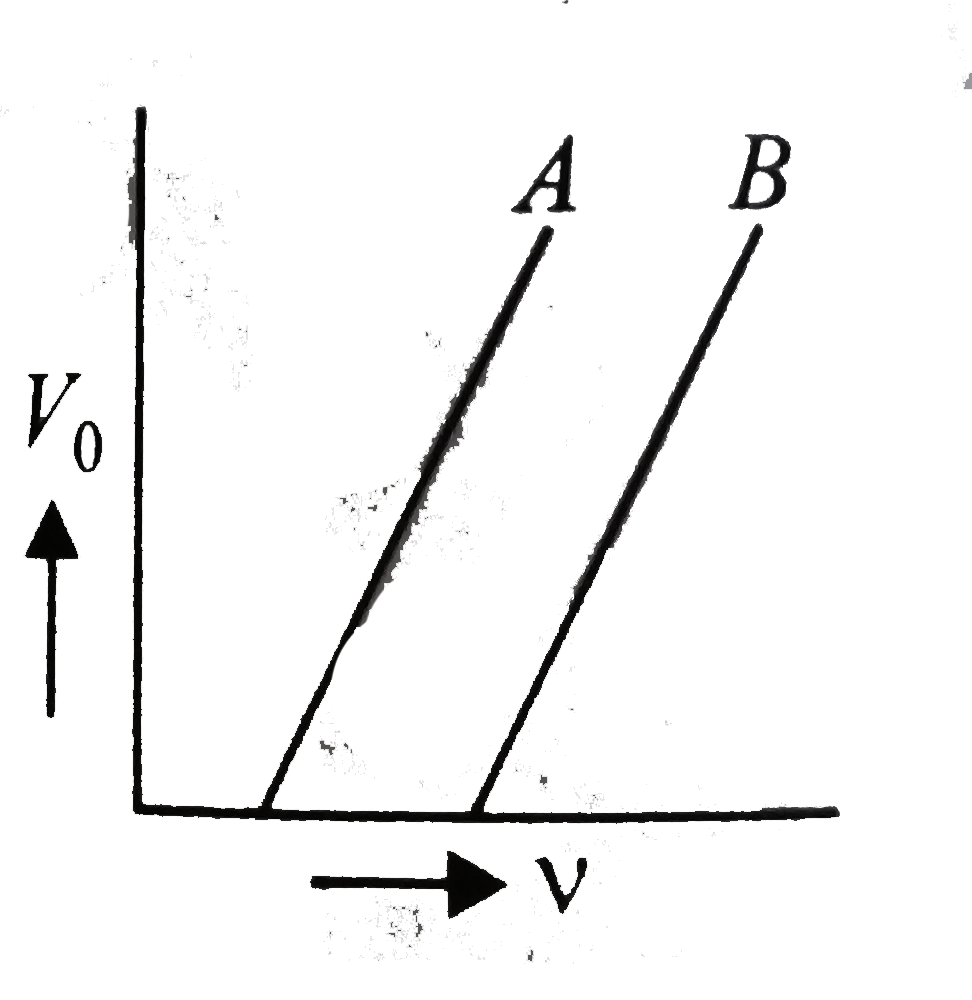 View Solution
View SolutionThe emission of electrons from a metal surface exposed rto light radaition of appropriate wavelength is called photoelectroic effect .The emmited electron are called photo=-weklectron work function of threshold energy may be defined as the minimum amount of energy required to ejercted electron from a most surface .According to Einstein
Maximum kinetic energy of ejected electron = Aborbed energy - Work function
12mv2max=h(v)−h(vn)=hv[1λ−1λn]
Where vn and λ0 are thereshold frequency and threshold wavelength respectively
Sopping potential : it is the miximum potential at which the photoelectric current becomes zero if V0 is the stopping potential eV0=h(v−v0)
In the photoelectric currect effect the shape of strainght line graph between stopping potential (V0) and frequency of incident light (V) gves
 View Solution
View SolutionThe minimum energy required to eject an electron from an atom is called
View SolutionWhen light falls on a metal surface , the maximum kinetic energy of the emitted photo - electrons depends upon
View SolutionThe kinetic energy of the ejected electrons in photoelectric effect is
View Solution

